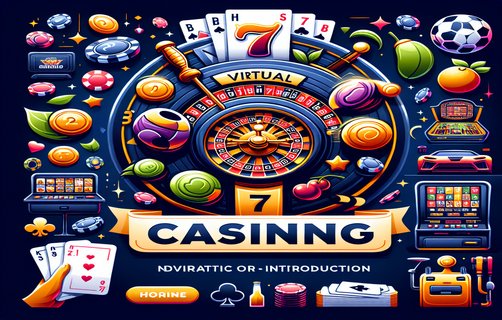Deciphering the Poker Game: A Deep Dive into Betting Strategies
पॉकर खेल की बारीकियों का विश्लेषण: सट्टा रणनीतियों में गहराई से डुबकी
In the intricate world of poker, understanding the nuances of gameplay can often be the difference between winning and losing. Players are constantly required to read patterns, adjust their betting strategies, and navigate the ever-shifting dynamics of the game. This article elucidates various critical aspects including reading patterns, bet adjustment analysis, identifying game flaws, pacing, risk assessment, reward strategies, and emotion regulation. The crux of any poker game lies in the ability to decipher opponents’ actions and bet sizes, which often reveal crucial insights into their hands. Developing a keen sense for these patterns can significantly enhance decision-making processes. For instance, if an opponent consistently raises after certain community cards appear, it could indicate a strong hand or a strategic bluff. Recognizing these trends equips players to finely tune their responses and potentially exploit gaps in their opponents’ strategies.
Bet adjustment analysis plays a crucial role in determining an optimal play strategy. Players must evaluate the pot size, their own chip stack, and the perceived strength of their hand versus opponents'. Collectively, these factors dictate whether to raise, call, or fold. A critical aspect is identifying game flaws—those moments when the traditional poker strategy may not apply due to an unforeseen shift in gameplay dynamics. Recognizing when these flaws manifest allows players to pivot and take calculated risks, often leading to significant gains.

Game pace and flow are equally important elements that can greatly influence outcomes. The tempo of a poker game varies based on player styles and tendencies. A slower, more methodical game may benefit players who excel in strategic thinking, whereas a fast-paced game might favor those adept in rapid decision-making. Being attuned to the rhythm of the table helps in adjusting one’s gameplay—whether to slow down the pace or ramp it up depending on the context.
Risk probability assessment involves calculating the likelihood of different outcomes based on available information. This analytical aspect significantly informs betting decisions. By weighing the common probabilities of winning a hand against potential losses, players can make more informed decisions on whether it is worth staying in the game or folding. This aspect intertwines closely with reward control strategies, which focus on managing one’s bankroll and optimizing return on investment. Good players know that chasing losses often leads to further detriment; hence, developing a sound strategy for when to bet big and when to play conservatively is vital.
Lastly, emotion regulation can be the unsung hero of successful poker gameplay. Players often overlook the impact of emotions—whether it be the euphoria of winning or the frustration of a bad beat. Keeping emotions in check allows players to focus on strategic decisions rather than being driven by impulsive reactions. Mindfulness techniques or setting clear boundaries around wins and losses can help maintain a level-headed approach. In conclusion, a thorough understanding of these components not only enhances a player’s poker skills but also promotes a more enjoyable gaming experience overall.
पॉकर की पेचीदगी में, खेलप्रदर्शन की बारीकियों को समझना अक्सर जीतने और हारने के बीच का अंतर होता है। खिलाड़ियों को लगातार पैटर्न पढ़ने, अपनी सट्टा रणनीतियों को समायोजित करने और खेल की गतिशीलता के साथ चलने की आवश्यकता होती है। यह लेख विभिन्न महत्वपूर्ण पहलुओं को स्पष्ट करता है जिनमें पैटर्न को पढ़ना, सट्टा समायोजन विश्लेषण, खेल की कमियों की पहचान, गति, जोखिम मूल्यांकन, इनाम रणनीतियाँ, और भावना का नियंत्रण शामिल हैं। किसी भी पॉकर खेल का सार विपक्षियों के कार्यों और सट्टा आकारों को जानने की क्षमता में निहित है, जो अक्सर उनकी हाथ की महत्वपूर्ण जानकारी प्रकट करते हैं। इन पैटर्नों के प्रति एक तेज संवेदनशीलता विकसित करना निर्णय लेने की प्रक्रियाओं को बड़े पैमाने पर बढ़ावा दे सकता है। उदाहरण के लिए, यदि कोई विपक्षी हमेशा कुछ समुदायिक कार्डों के प्रकट होने के बाद उठता है, तो यह एक मजबूत हाथ या एक रणनीतिक धोखा को इंगित कर सकता है। इन प्रवृत्तियों को पहचानना खिलाड़ियों को उनके उत्तरों को बारीकी से समायोजित करने और संभावित रूप से अपने विपक्षियों की रणनीतियों में कमी का शोषण करने में सक्षम बनाता है।
सट्टा समायोजन विश्लेषण एक अनुकूल खेल रणनीति निर्धारित करने में महत्वपूर्ण भूमिका निभाता है। खिलाड़ियों को पॉट का आकार, अपने चिप स्टैक, और उनकी हाथ की धारणा की ताकत की तुलना विपक्षियों के हाथों से करना चाहिए। संघटित रूप से, ये तत्व यह निर्धारित करते हैं कि बढ़ाना है, कॉल करना है, या छोड़ देना है। एक महत्वपूर्ण पहलू है खेल की कमियों की पहचान—वे क्षण जब पारंपरिक कसीनो की रणनीति लागू नहीं हो सकती है। जब ये खामियां प्रकट होती हैं, तो उन्हें पहचानने से खिलाड़ियों को पिवट करने और गणनात्मक जोखिम उठाने की अनुमति मिलती है, जो अक्सर महत्वपूर्ण लाभ की ओर ले जाती है।
खेल की गति और प्रवाह भी महत्वपूर्ण तत्व हैं, जो परिणामों को काफी प्रभावित कर सकते हैं। एक पॉकर खेल की ताल विभिन्न खिलाड़ी शैलियों और अनुरूपताओं के आधार पर भिन्न होती है। एक धीमी, अधिक सोच-समझकर खेलने वाले खेल से उन खिलाड़ियों को फायदा हो सकता है, जो रणनीतिक सोच में उत्कृष्ट होते हैं, जबकि एक तेज़-तर्रार खेल में वे लोग लाभ उठा सकते हैं, जो त्वरित निर्णय लेने में सक्षम हैं। टेबल की लय के प्रति जागरूक होना, किसी के खेल को समायोजित करने में मदद करता है—इसका मतलब है कि संदर्भ के अनुसार गति को धीमा करना या तेज करना।

जोखिम संभाव्यता मूल्यांकन विभिन्न परिणामों की संभावना की गणना करने में शामिल है, जो उपलब्ध जानकारी के आधार पर होती है। यह विश्लेषणात्मक पहलू सट्टा निर्णयों को सूचित करता है। जीतने की संभाव्यता की सामान्य संभावनाओं को संभावित हानि के विरुद्ध तौलकर, खिलाड़ी अधिक सूचना आधारित निर्णय ले सकते हैं कि खेल में बने रहना है या छोड़ देना है। यह पहलू इनाम नियंत्रण रणनीतियों के साथ करीबी संवेदनशीलता रखता है, जो किसी के बैंक रोल का प्रबंधन और निवेश पर रिटर्न को अधिकतम करने पर केंद्रित है। अच्छे खिलाड़ी जानते हैं कि हानियों का पीछा करना अक्सर आगे की हानि का कारण बनता है; इसलिए, बड़ा दांव लगाने और संयमित तरीके से खेलने के लिए स्पष्ट रणनीति विकसित करना बहुत महत्वपूर्ण है।
अंत में, भावना का नियंत्रण सफल पॉकर गेमप्ले का अनसुना नायक हो सकता है। खिलाड़ी अक्सर भावनाओं के प्रभाव की अनदेखी करते हैं—चाहे वह जीतने की खुशी हो या एक खराब टर्न के कारण हताशा। भावनाओं को संभालकर, खिलाड़ियों को रणनीतिक निर्णयों पर ध्यान केंद्रित करने की अनुमति मिलती है, बजाय इसके कि उन्हें आवेगित प्रतिक्रियाओं से प्रेरित किया जाए। माइंडफुलनेस तकनीकें या जीत और हानि के चारों ओर स्पष्ट सीमाएँ स्थापित करना एक स्तरदार दृष्टिकोण बनाए रखने में मदद कर सकता है। अंततः, इन घटकों की गहरी समझ न केवल खिलाड़ी की पॉकर कौशल का उत्थान करती है, बल्कि समग्र रूप से एक अधिक आनंददायक गेमिंग अनुभव को भी बढ़ावा देती है।

comments
GambitGuru
Really insightful article! The focus on emotional regulation is so crucial for poker players.
BetMaster88
I love the emphasis on adjusting strategies based on game pace! Great read!
SharkFin007
The section on reading patterns opened my eyes. I need to work on that more!
HighRollerJane
Fantastic breakdown of risk vs reward. I'll definitely incorporate some of these strategies into my game.
PokerFace23
The tips on emotion regulation are a game-changer! Thanks for sharing!
ChipCollector
This article deepens my understanding of bet adjustment analysis. Very useful!